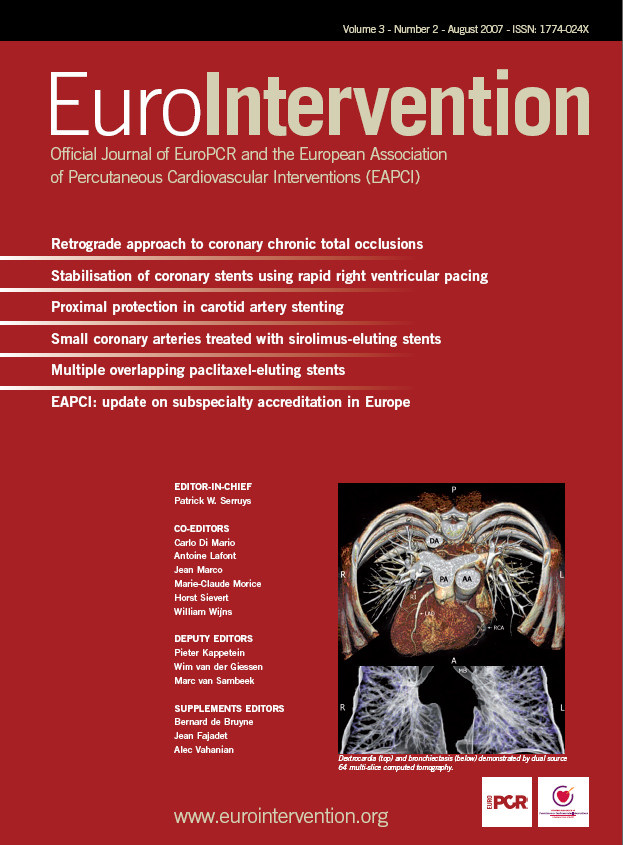Dear Colleagues,
We, European Interventionalists, are we self confident enough?
And what would it mean for us to claim this continent for our way of practising medicine, within our cultural contexts, using our own communication media?
Here at the Thorax Centre I am often approached by one of our fellows submitting a paper for internal assessment and review. My first question to them is where they intend to submit the paper, and their spontaneous first response is usually some American journal of cardiology. If the topic they are working on concerns an issue in intervention, I always suggest they consider an interventional journal of cardiology… even then, most of the time, they mention one of the American publications.
And here lies the crux of a problem that is reflected in many aspects of the European mindset: To reach a worldwide forum we believe we must imperatively publish in an American journal! The quality of American publications and American culture is not the question here, but the unquestioned assumption on our own part that this must be the best route to take. This is an assumption that we make at the expense of our own institutions, publications – the professional pride in what we are doing here. Europe is the centre for much clinical research and training. The educational structure that is now being put in place for our sub-specialty, as discussed in the EAPCI column, will be second to none, and underlines the strength of what we are doing. Remember, that the percutaneous intervention that we practice is a young discipline partially created in Europe itself by emblematic figures such as Zeitler, Grüntzig, Kaltenbach… and readership in this field is shared by many specialised journals such as: Catheterisation and Cardiovascular Interventions; International Journal of Cardiovascular Interventions; Journal of Interventional Cardiology; Journal of Invasive Cardiology.
In Europe, our own journal has recently published a whole series of innovative papers: first-in-man and breaking trials, as well as seminal consensus documents that clearly establish the level and quality of what we are accomplishing here.
But that negative response from my fellows - this lack of self confidence in our own European organs - undermines our capability to have a strong and vital European journal of cardiology.
Is it our role to convince the others, those who doubt?
I’m not sure of this, especially when the truth is so obvious. The truth of almost 15,000 EuroPCR attendees in each of the last three years. The truth that in a recent issue of an American interventional journal ten of the 12 papers were European, and of the other two, one was from Japan, and only one from the USA itself. I say, bring our own papers back home!
Back home to the community that we have constructed, and continue to construct for our specialty. The integration of our work with the ESC, EuroPCR and EAPCI. The validity of our European practice and education.
Perhaps you are thinking that it’s easy for me who has been publishing these last 20 or 30 years in American journals to suggest to a junior staff member, to come home and publish with us. And I am not saying that I don’t understand your reluctance to submit to a journal that has still not received its PubMed listing, but at the same time I assure you that our papers are noticed, that they are being read, online and in our print publication. Our papers are being heard, in meetings around the world, in classrooms and with the industry. And we will have our PubMed listing one day. And we are proud of what we have accomplished, and we are even more proud of what you – the young European specialists – are doing, and we ask you again, submit your work to us, come home and fully join the community that is truly your own.

